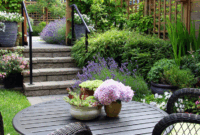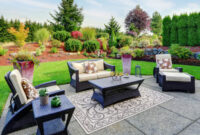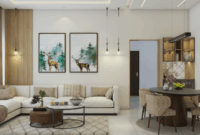In today’s world, the workspace at home is no longer just functional—it’s an experience. Creating a luxury home office means more than a desk and chair. It’s about elevating your environment so it supports focus, flow and inspiration. When you invest in smart home office design, you set the stage for a high-performance, comfortable and beautiful productivity workspace that reflects you. In this guide, we’ll explore practical steps, real-world examples and design details to help you build a home office where you *want* to work—and where you actually get things done.
See Architectural Digest’s gallery of inspiring home offices
1. Choose the Right Location and Layout
The first step in your luxury home office design is choosing the right space. Ideally, pick a room with natural light, a view or a sense of separation from household traffic. According to interior-design experts, natural light and dedicated space are major factors in creating a productive environment. Davidson London’s luxury home office guide emphasizes this connection between space and mindset.
When it comes to layout, shape your workspace around your workflow. If you spend hours on video calls, dedicated background, sound treatment and lighting matter. If you’re creative or hands-on, include a flexible zone or side table for sketching or deep work. Compared to a “desk in the corner” setup, a well-planned layout feels intentional, comfortable and high-value.
Pro Tip:
Place your desk facing the door or window—studies show it improves awareness and reduces stress. Consider zoning: one area for screen work, one for analog or break activity.
2. Invest in Premium Furniture & Ergonomics
A luxury space demands luxury furnishings, but that doesn’t mean over-the-top. In the context of a home office design, “luxury” means craftsmanship, materials and ergonomics. Built-in desks, custom cabinetry and tailored storage elevate your workspace. Luxury home office trends 2025 highlight bespoke furniture and refined finishes as key elements.
Ergonomics is crucial for a true productivity workspace. High-end adjustable desks, designer task chairs with lumbar support, and correct monitor height all contribute. Contrast that with basic office setups where ergonomics are an afterthought—luxury design puts comfort and health first, which in turn boosts focus and endurance.
Material & Finishes Tip:
Choose natural materials—walnut wood, leather touches, brushed brass pulls—for warmth and cohesion. Match textures to your personal brand so the space feels authentic.
3. Light, Color & Atmosphere That Inspire Focus
Lighting and color dramatically affect your mood and productivity. In a luxury space, the design considers three layers: ambient, task and accent lighting. According to Livingetc’s lighting advice, layering light sources creates richness and functionality.
For color and finishes, sophisticated palettes—deep navy, charcoal grey, rich greens, warm neutrals—calm the mind and elevate a space. Farnsworth Group’s trends note that luxury home offices in 2025 integrate refined color schemes with smart design. By contrast, a poorly lit or garishly painted office distracts and drains energy.
Pro Tip:
Use software or smart lighting with adjustable color temperature—from cool white (day) to warm (evening) to support your circadian rhythm.
4. Smart Tech, Automation & Seamless Connectivity
A modern luxury office isn’t complete without smart technology. Automation of lighting, climate, blinds and audio make your productivity workspace feel effortless. From voice commands to scheduled scenes, the right tech hints at luxury and functionality. According to design guides, smart integration is a standout feature in next-gen home office design. Fratantoni Luxury Estates’ guide lists tech integration as a must-have.
Examples: a button scene called “Zoom Ready” dims ambient lights, sets the front cam, turns off distractions and optimizes audio. Compared to manual toggling, this level of automation saves time and mental energy. For a true luxury upgrade, consider hidden AV gear, cable floor management and built-in charging stations.
Tech Tip:
Start with one integration (for example voice control of lights), then gradually expand your smart ecosystem as budget allows.
5. Storage, Organization & Clutter-Free Zones
In a high-end home office design, storage is subtle, smart and built-in. Custom cabinetry and hidden drawers help create a clean, elegant space—one where everything has its place. The article on luxury modern home offices by BuildLabs design blog highlights storage solutions as key to both aesthetics and productivity.
Clutter is productivity’s enemy. A desk piled with cables, random notebooks and sticky-notes creates mental noise. By planning meaningful storage—floating shelves, integrated cabinets, dual-purpose furniture—you maintain focus. Compare a minimalist luxury workspace to a home-office corner filled with misc items—the former supports high performance, the latter drains it.
Organization Tip:
Use drawer organizers, wireless chargers, and label systems. Set aside 10 minutes daily to tidy the space so the vibe remains elevated.
6. Acoustics, Privacy & Visual Calm
A luxury workspace pays attention to sound and atmosphere. Sound-absorbing material, thick drapes, carpet or slip rugs, and smart machine placement keep noise down. This is vital in a productivity workspace, especially for remote calls or focus work. According to Houzz home office ideas, designers emphasise acoustic comfort in home offices.
Privacy is another luxury upgrade. Whether it’s a glass enclosure, sliding door or audiovisual zoning, ensuring you’re undisturbed impacts workflows. Visually, a calm workspace helps: curated decor, signature materials and intentional design replace cluttered shelves or random décor. In luxury design, everything is purposeful.
Pro Tip:
Use a woven rug underfoot, install a high-quality door with seal, and consider a smart white-noise machine for deep-work blocks.
7. Personalization, Wellness & Balance
True luxury isn’t cold or impersonal. Your luxury home office should reflect you—with artwork, meaningful objects and a balance of wellness features. Biophilic design (plants, natural materials, views of outdoors) supports mood and concentration. The House Beautiful article on room serenity shows how design impacts emotional state.
Wellness features—adjustable sit/stand desks, ergonomic chairs, ambient lighting, and small zones for breaks—make the space feel alive and functional. A chair that lets you shift posture, a lounge corner for reading, or a mini-coffee bar also signal luxury. Compared with a generic workstation, a personalized, well-designed space supports sustainability, meaning you’ll actually use it productively over time.
Personalization Tip:
Add a piece of art you relate to, a plant or two, and an XO-level ergonomic feature you’ll use daily. These small touches elevate the feel.
Conclusion: Design With Intention for Performance + Style
Designing a luxury home office isn’t just about buying expensive furniture—it’s about building a workspace where every element enriches your workflow, mood and output. A great home office design weaves layout, furniture, light, tech, storage, acoustics and personalization into a seamless whole. By focusing on your live work style and implementing deliberate upgrades, you create a productivity workspace that does more than look good—it enables you to perform at your best.
Read our internal ultimate home office design guide (example.com)




